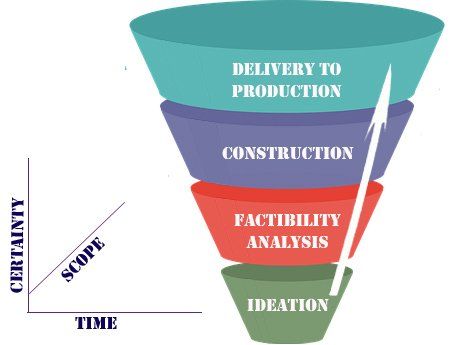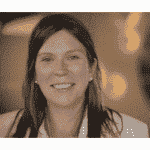Them, THEM, not US… how many times have we heard about the different gangs: IT, designers, marketing, operations, agilists, data scientists, sales. This “silo” mentality is what is keeping us from making a breakthrough in our organizations. I strongly believe that true successful delivery of solution comes from collaborative work and autonomous multidisciplinary teams.
We need to seat at a table altogether, quite literally, different disciplines that can look at a problem from complementary angles and create magic together. This diversity rules! Because when we unite business value, a client centric approach, data and technology, great ideas come to life. Once we are at that table we, the technical people, are not sitting there to just say YES or NO like judges mocking our fellow colleagues on how “bad” they have done their jobs. We are there to bridge the gap between the possible and the impossible, to make dreams come true. Make it happen. Make it possible.
As an engineer sometimes we tend to jump straight to the detail, to the solution, that is where we feel comfortable, that is our domain. But today’s problems are more and more complex everyday and they require us to leave our comfort zone and step into exploratory grounds filled with uncertainty. With our knowledge, the definition of the problem that we have; HOW, to WHAT can we say YES, we can do this! And iterate. You will have the opportunity to make it better in the next iteration, don’t stress yourself if it is not perfect from the beginning.
Believe me, there is time for everything, and during a creative process, it is healthy to take risks, to feel uncomfortable, to experiment, to fail, to say YES more often than not. Our value increases exponentially when we discover a way to say “no, but, what about if…”
You don’t need all the detail. We are surrounded by systems we created that did not see the light because of assumptions that lead our creation to fail, and that fear lives with us our whole careers. That is why we so often say NO to a new alternative, that is why we overestimate developments, we tend to take as little risk as possible.
Change from being blocker centric to enabler centric. Detect those shortcuts that make the solution cheaper, achievable, quicker to the market, that accelerates the organization and that elevate that multidisciplinary table. Great ideas come when you think about the business domain, use technology, use data as a tool and put yourself in the shoes of the client/ user.
Here are some practical aspects that you can use to become an enabler and bridge that gap:
- Be agnostic: analyze the problem and provide a solution that best suits it without favoritism for providers or technologies.
- Be resourceful: Inform yourself, but don’t lose yourself in the detail, always bubble up, see the whole scenario and think: what is the change I can do to make this better, quicker, to have more impact? Be simple and to the point.
- Be generalist: we know you specialize in a particular technology (mobile, data, cloud), but make the effort to see the problem and the solution as a whole, not just from the tools you have at hand.
How do we achieve this?
Through assets and tools that can help us deliver initiatives inside the transformation program. We can take each initiative through a process with different phases:
IDEATION: we think how to combine client’s needs and problems with the organization’s business drivers, technology and data.
- Trends/ technical ecosystem: know in deep how they work, how they integrate, how they will evolve
- Dependencies with vendors, that develop on and maintain internal systems plus dependencies with other external to the organization systems
FACTIBILITY ANALYSIS: plan how to make those ideas to be possible with what you have
- Current architecture understanding: analyze strengths and opportunities as you go
- Estimations: the more accurate the better, remember you don’t need all the detail
- Raise blockers
- Roadmap: accommodate initiatives based on all the above
CONSTRUCTION: hands on to make it happen
- Open architecture to enable re utilization and an external ecosystem
- Data Platform/ lake to enrich the knowledge of your client’s profile and behavior
DELIVERY TO PRODUCTION: put it into the market, measure and iterate!
- Quality assurance and cyber security
- Cloud infrastructure monitoring to allow for elastic operation of the initiatives

See these tools as a 3D funnel that starts small and grows incorporating more layers in each iteration. It is difficult to eat the elephant in one piece!
In short: step up, inspire yourself with solutions that align business, with user and data centric approaches using a solid technical platform. Be passionate about how you can iterate to deliver a real solution that drives the change. Confidence is gained and uncertainty is cleared by doing. Be persistent, no one said it would be easy. Avoid pharaonic programs and drive yourself by evidence and results through controlled experimenting. Believe!





